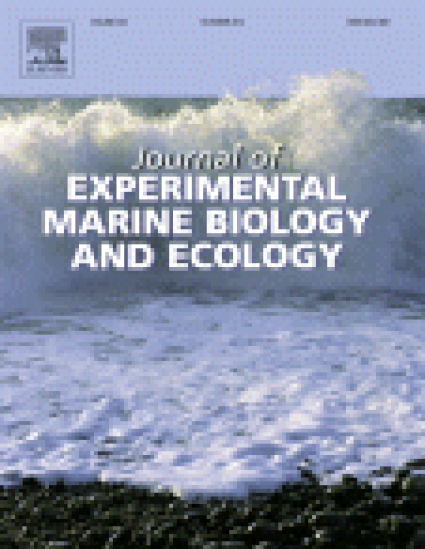
Article
Nutritional preferences override chemical defenses in determining food choice by a generalist herbivore, Littorina sitkana
Journal of Experimental Marine Biology and Ecology
(2009)
Abstract
In this study, we investigated why a littorinid snail, Littorina sitkana, preferentially consumes the ulvoid green algae Ulva lactuca and Ulva linza, even though these algae contain high concentrations of dimethylsulfoniopropionate (DMSP), which has been shown to be the precursor to an activated defense that deters feeding by sea urchins (Strongylocentrotus droebachiensisand S. purpuratus). When urchins consume algae containing DMSP, the DMSP is rapidly cleaved into DMS and acrylic acid, which are feeding deterrents to the urchins. In multiple-choice feeding-preference assays, L. sitkana consumed U. lactuca and U. linza at a greater rate than six other algal species. In experiments to confirm that DMSP was being cleaved by the snails, DMS was generated when snails were fed either U. lactucaor U. linza, but was not present in containers with snails alone or algae alone. In laboratory bioassays, acrylic acid reduced feeding by snails when it was incorporated into agar-based diets at concentrations of 0.25% and 0.50% of the food's fresh mass, demonstrating that the animals are deterred by one of the products of DMSP cleavage. When feeding rates from multiple-choice feeding-preference assay were compared to the carbon to nitrogen ratio (C:N) of the macroalgae, there was a strong negative linear relationship between grazing rates and C:N until a C:N of ~ 8 was reached. Algae with a C:N higher than 8 were avoided by snails. When the snails were offered agar-based diets containing a range of nitrogen concentrations (1.96–6.85% of the dry mass), feeding rates were positively correlated with the diets' nitrogen concentrations and negatively correlated with their C:N. Because L. sitkana forages only during low tides, it may have a limited window of time to obtain sufficient nitrogen. Therefore, it may preferentially select foods with high nitrogen concentrations, even though these foods contain chemical defenses.
Keywords
- Activated defenses,
- Chemical defenses,
- Food choice,
- Littorina sitkana,
- Nutritional quality
Disciplines
Publication Date
October, 2009
DOI
10.1016/j.jembe.2009.08.002
Publisher Statement
Published by Elsevier ScienceDirect
Citation Information
Kathryn L. Van Alstyne, Karen N. Pelletreau and Anna Kirby. "Nutritional preferences override chemical defenses in determining food choice by a generalist herbivore, Littorina sitkana" Journal of Experimental Marine Biology and Ecology Vol. 379 (2009) p. 85 - 91 Available at: http://works.bepress.com/kathryn_vanalstyne/17/
